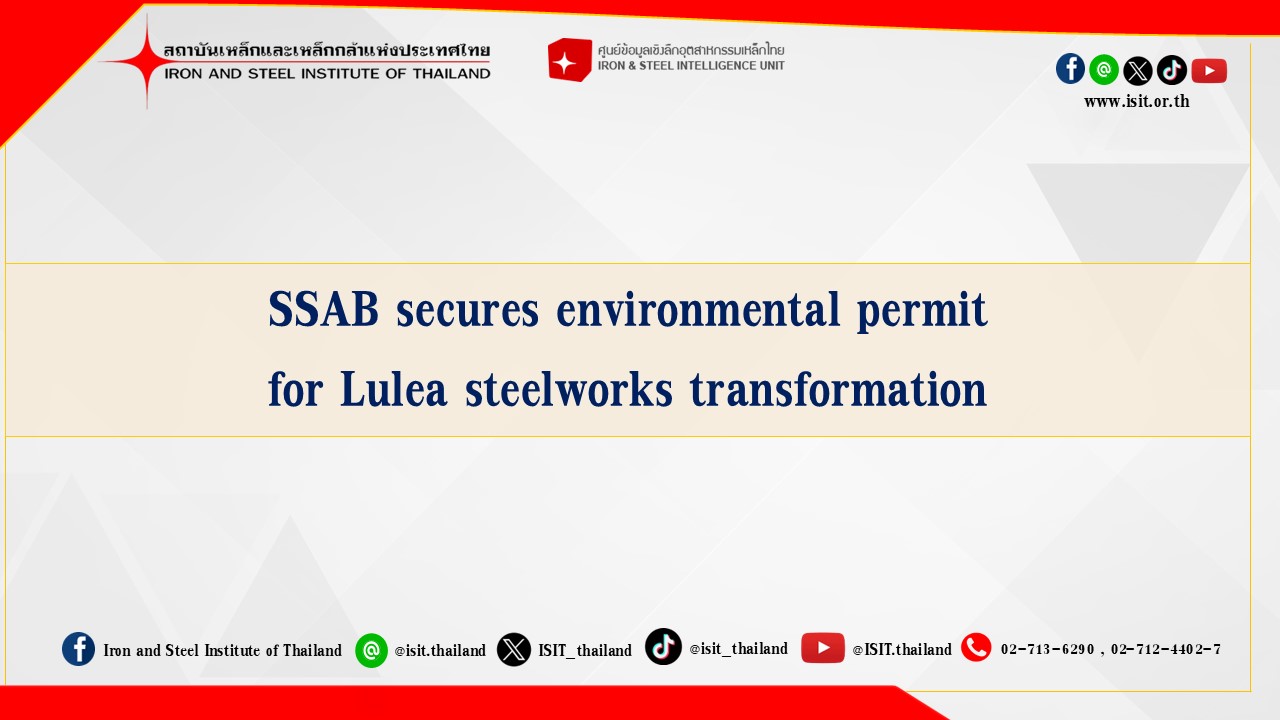
Nordic steelmaker SSAB received the necessary permit from the Land and Environmental Court in Umea, northern Sweden’s Vasterbotten County, to build and operate a mini-mill in Lulea, Norrbotten County, to replace the current blast furnace-based steel plant, it said in a Dec. 19 statement.
It said the permit enables a technology shift that would have positive effects on the environment and the climate and allow SSAB to meet the high demand for its steel products.
It further said construction preparations would now continue with detailed engineering and the building permit process.
It added that once the new plant with electric arc furnaces, rolling mills, and further processing was running at full capacity, SSAB would decommission Lulea’s current blast furnace-based production system.
“This is a big day for SSAB and for the transformation to fossil free steel production in Sweden. Now we can proceed with an investment that will result in reduced climate impact of national significance,” SSAB president and CEO Johnny Sjostrom said.
He added that the mill’s transformation would also create a more flexible and cost-effective production with a wider range of premium and special steel products with close to zero emissions and safeguard jobs in Lulea.
SSAB said the investment would result in a better cost position, higher efficiency, shorter lead times, and elimination of CO2 costs. The new mill would run on fossil-free electricity and be supplied with a mix of fossil-free sponge iron produced with its HYBRIT technology and recycled steel scrap.
Unlike traditional steelmaking, which relies on coking coal, SSAB’s HYBRIT process uses hydrogen, produced with renewable electricity, to produce sponge iron, which is then processed into steel. According to SSAB, the process emits water vapor instead of CO2 and largely eliminates CO2 emissions from the steelmaking process.
SSAB said the Lulea mill’s transformation would significantly reduce emissions to air and water, increase resource efficiency, and remove about 2.8 million mt/year of carbon dioxide emissions.
In total, SSAB’s transformation will enable a reduction of 10% in Sweden’s total CO2 emissions, of which 7% comes from Lulea and 3% from the transformation in Oxelosund, according to SSAB.
-- S&P Global Commodity Insights